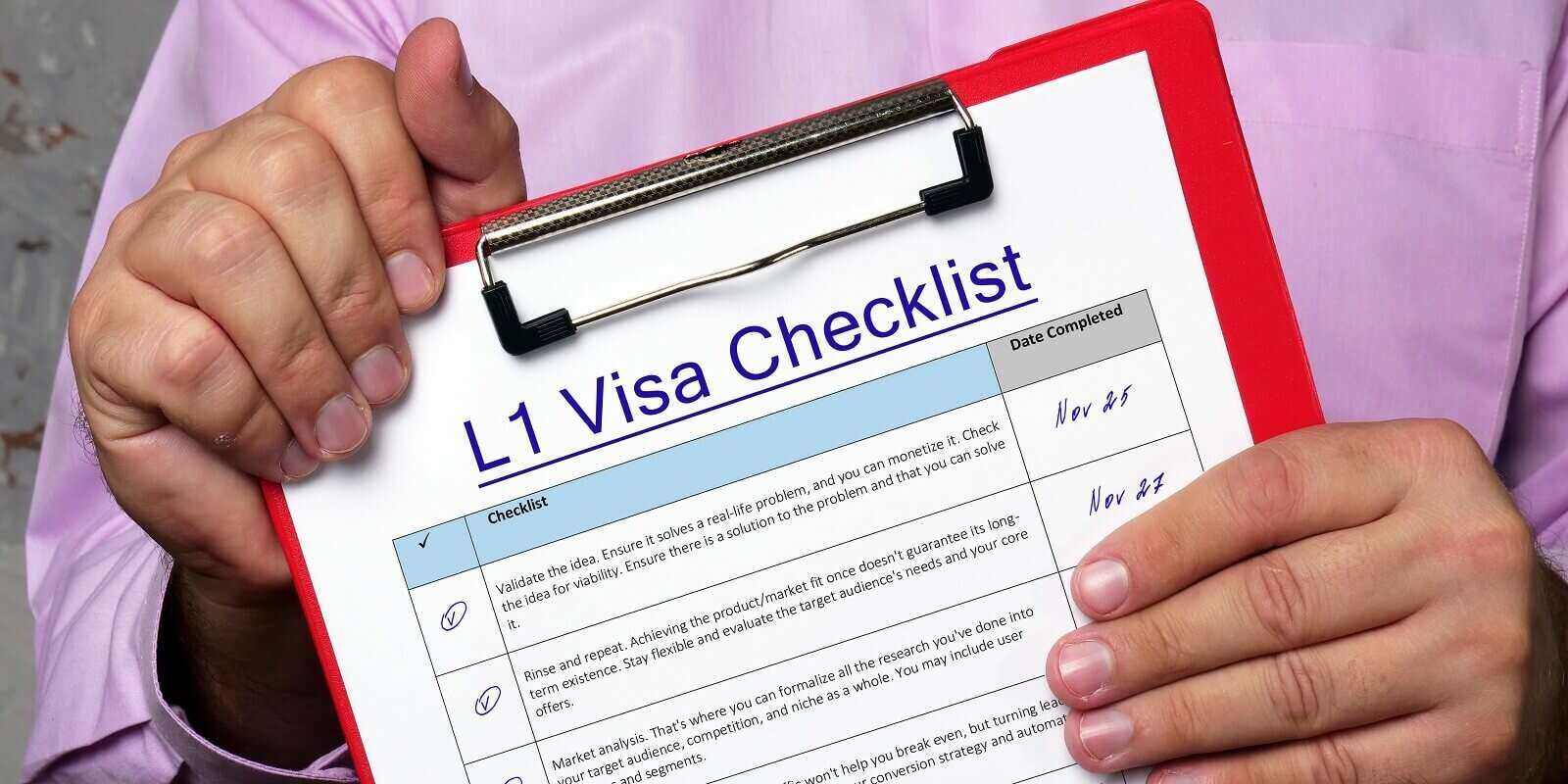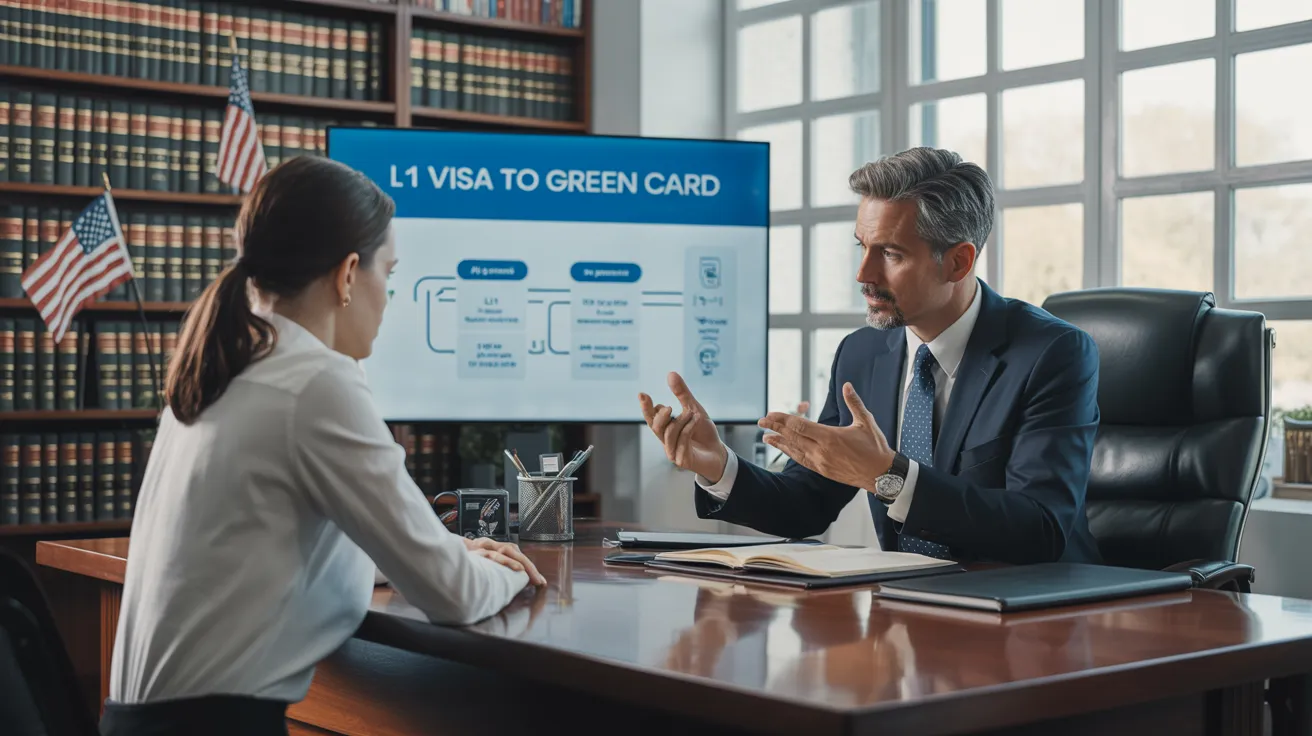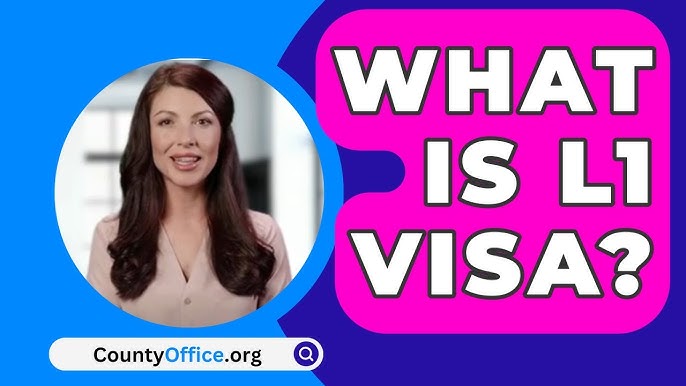Unlocking Opportunities: A Comprehensive Overview to the L1 Visa Process
The L1 visa process offers a vital path for multinational firms looking for to transfer essential employees throughout borders. Understanding the subtleties of qualification standards, the differences between L-1A and L-1B visas, and the complexities of the application process can substantially impact a candidate's success. Navigating this facility landscape is not without its challenges, and mindful focus to documents and employer sponsorship is important. As we explore the key components of this procedure, the methods for getting rid of potential challenges will become noticeable, disclosing just how informed prep work can open up a world of possibilities.
Understanding the L1 Visa
Understanding the L1 visa involves recognizing its importance as an important device for international firms seeking to transfer skilled workers between worldwide workplaces. This non-immigrant visa classification assists in the motion of execs, managers, and specialized expertise employees to the United States, thus allowing companies to preserve operational connection and harness international talent effectively. The L1 visa is split right into two primary classifications: L-1A for managers and execs, and L-1B for workers possessing specialized knowledge.The L1 visa serves an essential function in improving a company's affordable side in the global marketplace - L1 Visa Requirements. By allowing firms to transfer their vital employees, services can assure that essential jobs are handled by qualified people that are already aware of the company's society and operational processes. This internal transfer mechanism not just fosters understanding sharing yet also promotes technology and cooperation throughout borders.Moreover, the L1 visa is frequently preferred for its fairly straightforward application process contrasted to various other visa classifications, as it permits for dual intent, permitting holders to seek permanent residency while on a short-term copyright. This feature makes the L1 visa especially appealing for both companies and employees, as it enhances the pathway for skilled professionals to establish long-term residency in the USA
Qualification Requirements
Eligibility for the L1 visa rests on a number of essential standards that assure both the staff member and the employer meet certain certifications. This non-immigrant visa is made for multinational companies to transfer staff members from foreign offices to united state counterparts.Firstly, the company must be a certifying company, that includes a moms and dad business, branch, affiliate, or subsidiary of a united state company. The company must have been doing organization for at the very least one year both in the U.S. and abroad. This assures that the company has enough operational stability and a genuine presence.Secondly, the employee should hold a supervisory, executive, or specialized understanding position. For L1A visas, the candidate should show supervisory or executive credentials, while L1B visas concentrate on specialized knowledge associated to the organization's items, services, or processes. Furthermore, the employee should have benefited the foreign entity for at the very least one constant year within the last three years before their application.Lastly, the worker's duty in the U.S. should line up with their previous position, making certain that their skills and know-how are leveraged for the business's benefit.
Kinds of L1 Visas
The L1 visa group consists of 2 primary kinds created to promote the transfer of staff members within international companies: the L1A visa for supervisors and execs, and the L1B visa for employees with specialized understanding. Each type offers distinct functions and has specific eligibility criteria.The L1A visa is tailored for people that hold supervisory or executive settings within a company. This visa makes it possible for top-level workers to move to a united state branch, subsidiary, or affiliate of the exact same organization. Applicants for the L1A visa need to show that they have actually been employed in a managerial or executive capability for a minimum of one continual year within the past three years prior to their application. In addition, this visa uses a longer period of keep, at first granted for 3 years, with the opportunity of expansions for as much as seven years.In comparison, the L1B visa is planned for professionals with specialized understanding relevant to the business's items, solutions, or processes. To certify, applicants should show that their competence is vital to the company which they have actually functioned for at the very least one continuous year within the last 3 years in a role that required this specialized knowledge. The L1B visa is originally given for 3 years, with extensions offered for as much as 5 years.Both visa kinds are necessary for companies looking for to boost their global operations by leveraging skilled employees, thereby promoting technology and performance within the united state market.
Application Process
Steering through the L1 copyright procedure involves a number of important actions that should be diligently followed to ensure a successful end result. The procedure begins with the united state employer, that must first develop eligibility by demonstrating a qualifying relationship with the foreign entity and validating that the staff member fulfills the details demands for the L1 visa category being sought.Once qualification is validated, the company initiates the process by submitting Form I-129, the Application for a Nonimmigrant Employee, with the U.S. Citizenship and Migration Services (USCIS) This kind needs to be come with by a comprehensive description of the job duties to be carried out, the organizational framework of both the united state and foreign entities, and the staff member's qualifications. It's vital to confirm that all info is precise and total, as noninclusions or errors can bring about hold-ups or denials.Upon authorization of the I-129 petition, the following step entails the staff member using for the L1 visa at an U.S. consular office or consular office in their home country. This stage requires the completion of Form DS-160, the Online Nonimmigrant copyright, and setting up a meeting. During the meeting, the candidate should offer evidence sustaining their qualifications and the employer's petition.After the visa is provided, the employee can go into the USA to operate in the marked function. In general, cautious prep work and adherence per action of the application process are important for an effective L1 visa outcome.
Called for Documents

Crucial Types Needed
Navigating the L1 Visa process calls for cautious attention to the important forms and documentation necessary for an effective application. The primary kind required is the Kind I-129, Request for a Nonimmigrant Worker, which must be completed and submitted by the united state employer. This form details the details of the employment offer and the credentials of the worker seeking the L1 Visa.Alongside Type I-129, the candidate will require to complete Type I-539 if coming with member of the family are likewise obtaining visas. Furthermore, the company needs to provide evidence of the qualifying partnership between the U.S. entity and the international entity, typically necessitating the entry of business papers such as short articles of consolidation or monetary statements.Moreover, it is vital to include the L Classification Supplement to Kind I-129, which specifies the sort of L Visa being requested-- either L-1A for supervisors and execs or L-1B for workers with specialized understanding. Lastly, applicants should guarantee that all types are signed and dated properly, as incomplete entries can cause hold-ups or rejections. Correctly constructing these important forms lays the structure for a smoother L1 copyright procedure.

Sustaining Proof Demands
Supporting paperwork is essential for a successful L1 copyright, as it substantiates the insurance claims made in the request. Applicants must give a range of papers to show eligibility for the visa, which is categorized right into 2 main kinds: proof of the certifying connection between the U.S. and foreign entities and proof of the candidate's qualifications.To develop the relationship, applicants should submit paperwork such as business organizational graphes, financial statements, and evidence of possession. These papers confirm that the foreign company has a certifying relationship with the U.S. employer, whether as a moms and dad firm, subsidiary, branch, or affiliate.For the applicant's credentials, essential files consist of a comprehensive employment letter from the international company, detailing the applicant's job title, responsibilities, and duration of work. Additionally, academic qualifications, such as degrees and diplomas, ought to be provided to show the candidate's contact us know-how in the appropriate area.
Company Sponsorship Files

Common Challenges
Steering the L1 visa process presents several common difficulties that applicants should recognize. Key concerns frequently include stringent paperwork requirements, prospective hold-ups in processing times, and the need for strict lawful compliance. Comprehending these obstacles can assist candidates better prepare and alleviate dangers during their copyright trip.
Documents Demands
The L1 copyright procedure often provides significant difficulties connected to paperwork needs. Candidates must provide extensive documents to establish eligibility, which can bring about confusion and prospective delays. Secret records include evidence of a certifying relationship in between the united state and foreign company, proof of the candidate's employment history, and in-depth details about the job function in the U.S.One usual challenge is gathering sufficient proof to demonstrate the nature of the certifying partnership. Companies often struggle to present clear business charts or financial declarations that show the link between the entities. On top of that, making sure that letters of assistance from companies precisely mirror the applicant's task responsibilities and certifications is essential, as unclear summaries can cause denials.Another concern arises from the requirement for comprehensive job descriptions that align with the L1 visa categories. Candidates have to express not just their existing role yet likewise their managerial or specialized understanding responsibilities clearly. This demands a detailed understanding of both the candidate's setting and the regulatory language utilized in L1 applications.
Handling Dead Time
Experiencing hold-ups in processing times is an usual challenge faced by L1 visa applicants, frequently resulting in frustration and unpredictability. A number of elements add to these delays, including high application volumes, boosted examination of applications, and administrative stockpiles within the united state Citizenship and Immigration Services (USCIS) Candidates might find that processing times can vary considerably depending upon the service center handling their application, as each facility has its own workload and effectiveness degrees. Additionally, the intricacy of the candidate's situation, such as the demand for considerable paperwork or explanation, can additionally extend wait times.In some circumstances, issues connected to the candidate's existing immigration standing or previous visa background may likewise result in extra delays, as USCIS may require more review or details. It is essential for candidates to stay proactive throughout this period, keeping open communication with their companies and lawful reps to attend to any kind of possible concerns promptly.Understanding these processing time difficulties can aid L1 visa candidates prepare for feasible delays and mitigate the influence on their shift and job strategies. Patience and diligence are essential merits in maneuvering this elaborate procedure.
Legal Compliance Issues
Lots of L1 visa applicants experience legal conformity concerns that can complicate their trip towards getting the visa. Understanding and sticking to the particular laws set by the U.S. Citizenship and Migration Provider (USCIS) is essential. Common obstacles include showing the certifying partnership between the international and united state companies, as well as verifying that the applicant has the requisite specialized knowledge or managerial capacity.Additionally, candidates have to offer extensive paperwork describing their task duties, corporate framework, and economic practicality of the U.S. entity. Insufficient or unreliable documentation can result in delays and even rejections. Companies need to also guarantee that they follow labor legislations, consisting of wage and working problem requirements, which can impact visa eligibility.Another typical issue involves maintaining compliance with the terms of the visa as soon as granted. Adjustments in work status, job duties, or firm framework can require amendments to the visa, which otherwise dealt with promptly can cause legal difficulties. Because of this, remaining educated regarding compliance demands and looking for lawful guidance when needed is essential to navigate the complexities of the L1 visa process effectively.
Tips for Success
Success in the L1 copyright procedure usually pivots on meticulous preparation and focus to information. To improve your opportunities of authorization, start by extensively understanding the eligibility requirements for both the L1A and L1B visa groups. Evaluate whether your setting at the company qualifies as managerial, executive, or specialized knowledge, as this classification notably affects your application.Next, gather substantial documents that validates your cases. This includes business charts, detailed job descriptions, and proof of the firm's operational framework. Clear and succinct evidence of the qualifying relationship between the united state entity and the foreign entity is vital. Verify that all papers are arranged rationally and offered in an expert manner, as this mirrors your dedication and seriousness about the application.Engage the services of an experienced migration attorney who concentrates on L1 visas. Their expertise can prove important, guiding you via complex regulations and assuring that all paperwork adheres to current legislations. Additionally, get ready for the meeting by exercising solutions to typical questions and preparing to discuss your role and payments to the business extensive.
Often Asked Concerns
Can Family Members Members Accompany the L1 Visa Owner?
Yes, relative of L1 visa holders, including partners and single children under 21, can accompany the main visa holder. They might additionally look for L2 visas, which allow them to reside in the United States.
For How Long Can I Keep on an L1 Visa?
The L1 visa permits preliminary stays of approximately three years, with the possibility of expansion. L1A visa owners might stay for an optimum of 7 years, while L1B visa holders can continue to be for 5 years.
Can L1 Visa Owners Look For a Permit?
Yes, L1 visa owners can obtain a permit. L1 Visa Requirements. They might pursue permanent residency via employment-based classifications, commonly calling for sponsorship from their employer, provided they satisfy the essential qualifications and paperwork demands
What Happens if My L1 copyright Is Denied?
If your L1 copyright is refuted, you may get a notice detailing the factors for denial. You can look for to appeal the decision, reapply, or check out different visa options based upon your situations.
Are There Any Traveling Limitations With an L1 Visa?
An L1 visa typically enables worldwide travel; however, re-entry to the united state is contingent upon keeping valid status. Vacationers should guarantee compliance with visa conditions to avoid difficulties upon return
Conclusion
